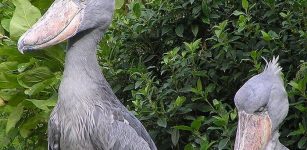First Image Of Asteroid Bennu: OSIRIS-REx Spacecraft Makes Final Approach Towards The Object
MessageToEagle.com – After an almost two-year journey, NASA’s asteroid sampling spacecraft, OSIRIS-REx, took the first photo of asteroid Bennu last week and began the final approach toward its target. The image was obtained the image from a distance of 1.4 million miles (2.2 million km).
OSIRIS-REx (launched in 2016) will arrive at asteroid Bennu in December, 2018. OSIRIS-REx will help unveil the mysteries of our solar system’s formation.
OSIRIS-REx is NASA’s first mission to visit a near-Earth asteroid, survey the surface, collect a sample and deliver it safely back to Earth. The spacecraft has traveled approximately 1.1 billion miles (1.8 billion km) since its Sept. 8, 2016, launch and is scheduled to arrive at Bennu on Dec. 3
“Now that OSIRIS-REx is close enough to observe Bennu, the mission team will spend the next few months learning as much as possible about Bennu’s size, shape, surface features, and surroundings before the spacecraft arrives at the asteroid,” said Dante Lauretta, OSIRIS-REx principal investigator at the University of Arizona, Tucson. “After spending so long planning for this moment, I can’t wait to see what Bennu reveals to us.”

OSIRIS-REx will observe the area around the asteroid to search for dust plumes and natural satellites, and study Bennu’s light and spectral properties.
On Oct. 1, the spacecraft will perform a series of four asteroid approach maneuvers, slowing the spacecraft to match Bennu’s orbit around the Sun. It will also jettison the protective cover of the spacecraft’s sampling arm in mid-October and subsequently extend and image the arm for the first time in flight. Additionally, OSIRIS-REx will use OCAMS to reveal the asteroid’s overall shape in late-October and begin detecting Bennu’s surface features in mid-November.
After arrival at Bennu, the spacecraft will spend the first month performing flybys of Bennu’s north pole, equator and south pole, at distances ranging between 11.8 and 4.4 miles (19 and 7 km) from the asteroid. These maneuvers will allow for the first direct measurement of Bennu’s mass as well as close-up observations of the surface. These trajectories will also provide the mission’s navigation team with experience navigating near the asteroid.
“Bennu’s low gravity provides a unique challenge for the mission,” said Rich Burns, OSIRIS-REx project manager at NASA’s Goddard Space Flight Center in Greenbelt, Maryland. “At roughly 0.3 miles [500 meters] in diameter, Bennu will be the smallest object that any spacecraft has ever orbited.”
The spacecraft will extensively survey the asteroid before the mission team identifies two possible sample sites. After sample collection, the spacecraft will head back toward Earth before ejecting the Sample Return Capsule for landing in the Utah desert in Sept. 2023.
MessageToEagle.com










